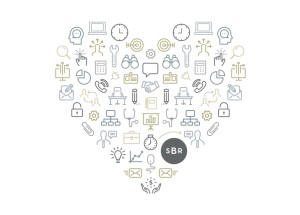Anyone who has ever gone to the grocery store knows this scenario well: you turn the corner of the breakfast foods aisle and find yourself confronted with hundreds of different types of cereal. Cheerios alone have over eleven different flavor options (not even considering size variations!), including original, honey nut, honey nut medley crunch, apple cinnamon, banana nut, frosted, chocolate, multi-grain, multi-grain peanut butter, Dulce de Leche, and cinnamon burst. For the average shopper, so many products on a shelf are bound to trigger a headache unless they walk in knowing precisely what they need.
IS MORE REALLY BETTER?
In 2000, researchers Sheena Iyengar & Mark Lepper set out to explore the belief that the more options we have, the better. In a series of experiments conducted in both field and laboratory settings, they found that individuals are more likely to purchase a product (specifically jam) when offered a limited array of 6 choices, rather than a wide array of 30 choices. Moreover, the participants reported greater subsequent satisfaction with their selections when their choices were limited. Think long-term customer retention.
According to a psychology professor and author of “The Paradox of Choice” (HarperCollins, 2003) Barry Collins, an abundance of options can cause a buyer to experience decision paralysis and not make a decision at all. Or they might make a rash decision based on what is easiest to evaluate, rather than what is important and necessary, triggering buyer’s remorse.
FOUR MAIN PSYCHOLOGICAL MECHANISMS UNDERLYING “THE PARADOX OF CHOICE”.
- Regret: The concept of post-decisional regret states that feeling regret increases with the number of options that we have to turn down. We assume a personal responsibility for making a bad choice and find it easier to replay in our minds what may have occurred had we chosen another option.
- Opportunity Costs: When making a decision, we are inherently suffering an opportunity cost for not choosing the options we left behind. Our brain requires that we produce reasons why we didn’t go with each of the other options, causing psychological stress.
- Expectations: As the number of choices increase, so do our expectations to find the perfect option. With higher expectations, we subject ourselves to higher levels of disappointment.
- Social Comparison: With more options, we are more likely to compare what we have with what others, theoretically, could have, therefore increasing our likelihood of simply comparing ourselves to others.
Barry Collins argues that having some choice is good, as it allows people to recognize their preferences and choose on their own volition. However, when too many choices are introduced, psychological satisfaction with that choice can go in the opposite direction. This also pertains to the people behind the purchasing decisions made for companies. At SBR, we were interested in applying this knowledge in a practical way to help our clients increase sales and drive revenue.
TOO MANY CHOICES CAN RESULT IN LOWER SALES.
This excerpt from Barry Collin’s TED Talk reveals the impact that too many choices can have on sales:
“A colleague of mine got access to investment records from Vanguard, the gigantic mutual fund company of about a million employees and about 2,000 different workplaces. And what she found is that for every 10 mutual funds the employer offered, the rate of participation went down two percent. You offer 50 funds — 10 percent fewer employees participate than if you only offer five. Why? Because with 50 funds to choose from, it’s so damn hard to decide which fund to choose, that you’ll just put it off until tomorrow. And then tomorrow, and tomorrow, and tomorrow, and of course tomorrow never comes. Understand that not only does this mean that people are going to have to eat dog food when they retire because they don’t have enough money to put away, it also means that making the decision is so hard that they pass up significant matching money from the employer. By not participating, they are passing up as much as $5,000 a year from the employer, who would happily match their contribution.”
YOUR SALES TEAM CAN ELIMINATE DECISION PARALYSIS.
Salespeople can mitigate challenges caused by an excessive number of options. How? They can target this psychological process by identifying customer’s preferences and present them with a narrower selection from which they may choose. Rather than “product dumping,” and simply listing all of the features of a variety of products, a sales person must narrow the set of options, and present them in a digestible way.
Naturally, they must first determine what the customer’s needs are (by asking directional questions) and then recommend the product(s) that fit their specific requirements. To further ease the decision-making process, storytelling techniques can be used to help the customer imagine how this product will improve their life or their company.
With a smaller selection of defined options, the buying experience will be less psychologically taxing, and more profitable for the organization. Not only will the customer be more satisfied with your company, but also with themselves for coming to a conclusion seemingly on their own. Win-win. Click here to learn how SBR has catapulted sales performance and results for our clients.








